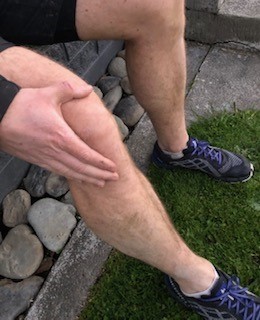
I’ve always regarded winter as an opportune time for training; to stay warm, stay active, and get race ready for running events around New Zealand that tend to kick off in the spring and run through the summer. Rain and shorter days can be reasons to avoid running, but so can aches and pains, particularly around the knee.
What is it?
Patellofemoral pain syndrome (PFPS) the most common form of anterior knee pain and is so common amongst runners that it is often termed “runner’s knee”. Don’t let the nickname put you off, this condition can affect people participating in other activities such as cycling or more dynamic sports such as netball and basketball.
Research suggests that PFPS affects up to 25% of people who run, and this number is even higher in adolescents and elite cyclists, 30% and 35%, respectively!
Although this condition is common, it can be due to individual factors that are extrinsic (footwear, training load, and running surfaces) or intrinsic (anatomy, biomechanics, or muscle strength/weakness). This is where podiatrists can assess and help manage factors that are unique to the individual experiencing anterior knee pain.
Symptoms:
Pain often presents at the front of the knee, and around or behind the “knee cap” (patella). Often the symptoms are increased with running and activities that involve knee flexion, such as squatting or walking up and down stairs.
Symptoms are usually of gradual onset and slowly get worse overtime, although some cases can be caused by trauma, and may affect both knees. Most people will describe their pain as achy, though sometimes can be sharp, and can also feel stiff, particularly after sitting for prolonged periods of time or whilst participating in aggravating activities. Often pain is affecting a general area at the front of the knee and can be difficult to pinpoint.
In some cases, people may report feelings of the knee giving way or the patella subluxing out of place. These are factors that can affect PFPS, and dislocation of the patella is more common in adolescents. However, symptoms that are not characteristic of PFPS are swelling, popping, or locking of the knee joint. These are more often seen in other conditions affecting the knee.
Risk Factors:
People that are most at risk of PFPS are those that participate in activities that have repetitive movements such as running or cycling. If a person has changed their training routine to include more intensity or frequency, this can also be an aggravator for PFPS. Footwear can have an impact as old shoes may be worn out and shoes that are not supportive enough will both affect how the foot, knee, and hips move. If there are excessive movements in the foot, knee, or hips due to poor muscle strength, flexibility, or one’s individual anatomy, this can also be a risk factor for PFPS.
Management:
In our podiatry clinic, we will use our knowledge of anatomy and biomechanics to assess the way a person walks and runs to determine how these factors can be causing anterior knee pain. Several of the Resonance clinics have an advanced 3D gait analysis program that can analyze movements in the hip, knee, and foot and how these movements can affect PFPS. With our understanding, we can analyze footwear to ensure you have the right fit and support, and discuss a person’s training, as we often see that “too much, too soon” is a common risk factor for PFPS. We will also check the range of motion of joints and check for muscle strength as this can also be a deficit that increases one’s risk for PFPS.
Together we can work with our patients to decide on a management plan, whether it is footwear, orthotics, or an exercise program, to help with patellofemoral pain syndrome and get you moving again!
By Resonance Podiatrist Megan McPherson
References:
Dixit, S., Difiori, J. P., Burton, M., & Mines, B. (2007). Management of patellofemoral pain syndrome. Am Fam Physician, 75(2), 194-202.
Brukner, P., & Khan, K. (1995). Clinical Sports Medicine. Sydney: McGraw-Hill Book Company.
PodChat Live. (2018, November 22). Episode 51 on Patellofemoral Pain [Audio podcast].

